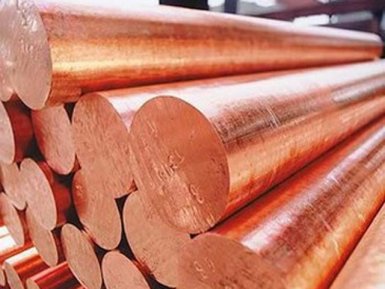Pressure treatment of metals, steels and alloys

Are you interested in methods of pressure treatment of various metals, steels of alloys from the supplier company AvecGlob? Here you will find interesting information on this topic.
Principle of plastic deformation
All methods of metal working with pressure (OMD) are based on plastic shaping of blanks or semi-finished products under the influence of external factors — forces, torque or energy pulses.
During the OMD, the plastic flow of metal occurs in the direction allowed by external forces, moments or pulses. This movement can be controlled when the metal or alloy particles are guided by the working tool or uncontrolled when the metal of the workpiece moves in the direction of least resistance. Accordingly, the closed and open OMD processes are distinguished. The former are characterized by increased accuracy, but also by significantly higher energy inputs, and therefore are used primarily as final transitions of plastic deformation. Open OMD processes are used for preforming metals and alloys.
After the OMD, the structure of the metal changes: initially anisotropic, it becomes more directed: the microstructure grains decrease in size and are stretched in the direction of the action of the external factor. The strength of most metals and alloys of deformation increases: this phenomenon is called hardening.
Urgency of application
OMD is used to manufacture parts (blanks, forgings) of varying degrees of complexity, and depending on the plasticity of the metal / alloy, the ultimate deformation rates can reach 95%. OMD is widely used in industries with a mass and serial nature of production — the automotive industry, the production of construction and road machinery, metalware, household appliances (washing machines, refrigerators, vacuum cleaners), electronics and electrical industry, aviation and space engineering, etc.
Under certain conditions of the stress-strain state scheme, even low-plastic materials can be processed by OMD methods.
Supplier — AvekGlob Company — offers at affordable prices from the manufacturer various metals and alloys successfully subjected to OMD, in the quantity and assortment required by the customer. The supplier guarantees the timely delivery of products to any address specified by the consumer.
Equipment
For OMD use the following types of machines:
Rolling and drawing mills;
Hammers (steam-air, pneumatic mechanical);
Presses (hydraulic, mechanical, pneumatic);
High-energy installations (pulsed and high-speed machines);
Statues (gas, hydraulic).
The ratio of machines for OMD to the park of other metalworking equipment for modern machine and instrument manufacturing is approximately 1: 4… 5.
Advantages and limitations
OMD processes allow:
Significantly reduce metal losses during processing;
To increase the productivity of metalworking;
Ensure good accuracy of the final product;
Improve the performance characteristics of the resulting products.
At the same time, the majority of OMD technologies are distinguished by the increased energy consumption and metal consumption of the equipment used.
Supplier — AvekGlob Company — offers to purchase various metals and alloys used in OMD processes in any quantity and range of sizes. Products can be bought at a price formed on the basis of European and world standards of production. Implementation is possible in bulk and retail, for regular customers, a flexible system of discounts operates.


